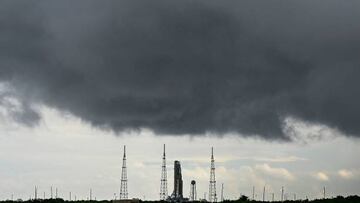NASA notes ‘ghostly fingerprints’ reduced by IMO sulfur limit
Due to the 2020 IMO regulations, NASA satellite observations prove a decrease in the number of clouds seeded by ship pollution

According to a new report released by NASA’s Goddard Space Flight Center, the adoption of the low sulfur fuel oil regulations for the shipping industry in 2020 has proved successful in reducing pollution. Introduced by the International Maritime Organization, the global standard limiting sulfur in ship fuel reduced artificial ship tracks; highly-concentrated clouds formed around the pollution released in ships’ exhausts, to records lower than the regional sulfur caps that preceded it.
Drawing on almost two decades of satellite imagery and infrared imaging technology, researchers found that the amount of ship tracks has fallen significantly. Using advanced computing techniques to create the first history of ship track clouds’ measurements, or global climatology, scientists analyzed the daytime imagery from 2003-2020, a 17-year period, concluding the 86% decrease in sulfur content was due to the IMO’s regulation.
The researchers reported that ship tracks were observed at first as “anomalous cloud lines” in weather satellite images in the 1960s. These trails are formed by water vapor merging around small particles of pollution in ship exhaust. The engrossed droplets disperse more light, hence appearing brighter than non-polluted marine clouds that are seeded by larger particles like sea salt. These tracks can be used to monitor shipping activity and its impact.
A patchwork of bright, criss-crossing cloud trails was created by ships churning through the Atlantic Ocean in this @NASAEarth satellite image. These narrow ship tracks form when water vapor condenses around tiny particles of pollution that ships emit: https://t.co/hyeJEvHKKx pic.twitter.com/TW28dnLJQo
— NASA (@NASA) January 23, 2018
Covid-19 effect on pollution
Another conclusion as a result of the requirement for the use of Low Sulfur Fuel Oil (LSFO), is the change of chemical and physical composition of ship exhaust. According to the researchers, there are fewer aerosol particles discharged to form detectable ship tracks.
Scientists also considered that covid-19 had a big role in these changes. Due to disruptions to shipping activity during the pandemic, global shipping traffic was reduced by 1.4 percent for a few months. “But this change alone could not explain the large decrease in observed ship tracks, which remained at record-low levels through several months of 2021,” claims the NASA report.
YOU MAY BE INTERESTED:
- Solar eclipse of October 2022: when is it, where can it be seen and how to follow the partial solar eclipse
- The ‘James Webb’ reveals new details of the ‘Pillars of Creation’
IMO 2020 and its effect
Coming into force in January of 2020, IMO limited the sulfur content of fuel oil to 0.5%, down from 3.5% prior to the regulation. According to the researchers, regional regulation on fuel sulfur content did not have the same successful effect, as operators altered their routes and charted longer courses to avoid the affected areas.
A global standard limiting sulfur in ship fuel reduced artificial “ship track” clouds to record-low levels in 2020. Pandemic-related disruptions played a secondary role.https://t.co/NSVcXPZxIX
— Unearthed (@UE) October 20, 2022
Related stories
Interestingly, the study also noted that an unexpected high density of ship tracks aligned with busy shipping lines (excluding an anomaly in the Southern Ocean,) was found. This is due to natural sulfur oxide plumes coming from volcanoes, which demonstrates the validity of the track-tracing method.
More on the study can be found here, and is available online: Global reduction in ship-tracks from sulfur regulations for shipping fuel.


